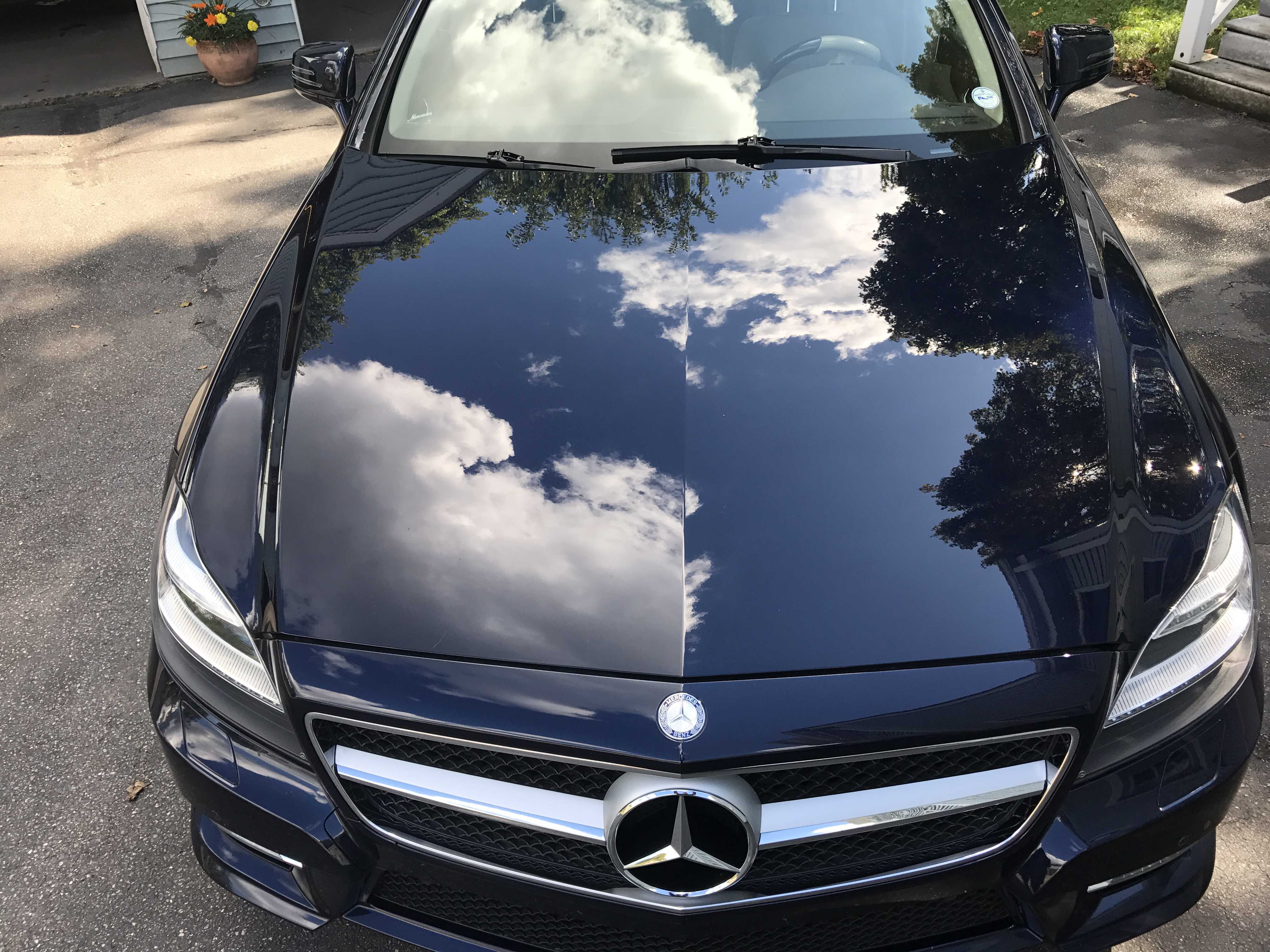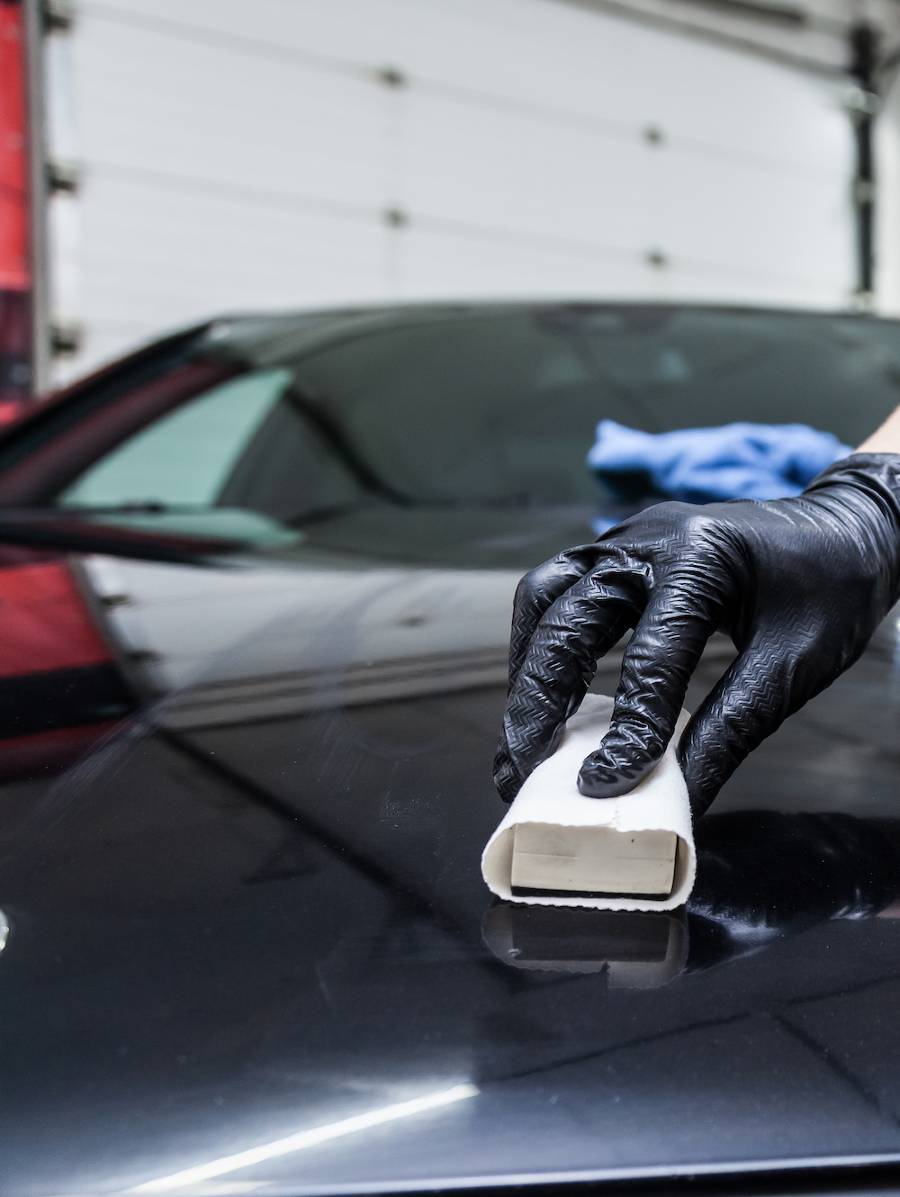Why Ceramic Finish Is the Ultimate Service for a Remarkable End Up
Ceramic layer has become a leading solution for those looking for a flawless finish for their vehicles, many thanks to its amazing sturdiness and safety features. This sophisticated fluid polymer not only bonds seamlessly with factory paint yet additionally provides a formidable obstacle against usual threats such as scratches, UV rays, and toxic wastes. In addition, its hydrophobic residential or commercial properties simplify upkeep while boosting visual appeal. Understanding just how this modern technology compares to conventional approaches and exploring its application subtleties can expose even a lot more regarding its worth. What variables really established ceramic layer apart?
What Is Ceramic Covering?

When used appropriately, ceramic layer develops a hydrophobic surface that drives away water and dirt, making it much easier to clean up and preserve. Unlike traditional waxes or sealers, which generally supply brief defense, ceramic coatings can last for a number of years, depending upon the product high quality and application approach. The procedure of using ceramic finish calls for precise preparation, including comprehensive cleaning and often paint improvement, to guarantee ideal bonding and effectiveness.
Ceramic layers are not restricted to vehicle surfaces; they can additionally be used on various materials, consisting of glass, metal, and plastics, giving a versatile solution for enhancing defense. Generally, ceramic coating stands for a considerable improvement in surface area protection technology, combining both functional and aesthetic advantages for a variety of applications.
Advantages of Ceramic Coating
While several surface protection options exist, the benefits of ceramic finishing stand apart as a result of its one-of-a-kind residential properties and resilient performance. Among the main advantages is its exceptional longevity. Ceramic Coating Philadelphia. Unlike typical wax or sealers that require constant reapplication, ceramic coverings offer a resistant layer that can last for several years, substantially decreasing upkeep initiatives
One more significant advantage is boosted security against environmental contaminants. Ceramic coverings produce a hydrophobic surface area that repels water, dust, and different toxins, making it less complicated to cleanse. This feature not just protects the lorry's appearance but also reduces the risk of deterioration and oxidation, specifically in rough climate problems.
In addition, ceramic finishings provide premium resistance to UV rays, avoiding fading and degradation of paint over time. This UV security is essential for keeping the aesthetic worth of automobiles and surfaces exposed to direct sunshine.
Additionally, the shiny finish attained with ceramic covering boosts the total aesthetic allure, providing surfaces a showroom-quality shine. In general, ceramic finishes represent a considerable advancement in surface area protection technology, offering enduring benefits that accommodate both aesthetic and useful demands.
How It Works
Recognizing the scientific research behind ceramic finishings exposes how they give such amazing defense and longevity. At its core, a ceramic finishing is a fluid polymer that chemically bonds with the lorry's factory paint. This bonding produces a protective layer that is both hydrophobic and oleophobic, repelling water, dirt, and oil. The primary part of the majority of ceramic coatings is silicon dioxide (SiO2), which is stemmed from quartz. This substance adds to the layer's solidity and resistance to scratches, UV rays, and environmental pollutants.
The visit here application procedure involves multiple actions, consisting of surface preparation, which is critical to achieving optimal bond. When applied, the finish undertakes a curing procedure, during which it hardens and creates a semi-permanent bond with the paint surface. This bond is what identifies ceramic finishings from typical waxes and sealers, supplying a longer-lasting safety obstacle that can endure for years.
Moreover, the density of the coating can boost its safety top qualities, making certain that it can withstand rough problems. Inevitably, the science of ceramic layers combines innovative materials with cutting-edge application methods to supply an exceptional level of security and aesthetic improvement for cars.
Contrast With Standard Methods
When contrasted to traditional paint defense methods such as waxes and sealers,The benefits of ceramic coverings come to be specifically noticeable. While waxes use a temporary luster, normally lasting a few weeks to a number of months, ceramic finishings supply a long-lasting safety layer that can sustain for several years. This toughness substantially minimizes the frequency of reapplication, making ceramic coverings a much more economical service gradually.
In addition, conventional methods frequently require extensive prep work and several applications to accomplish an adequate level of security. On the other hand, ceramic coverings bond at a molecular degree with the vehicle's surface, creating a durable shield versus ecological impurities like UV rays, acid rain, and road salts. This bond boosts the automobile's resistance to scrapes and swirl marks, which prevail with conventional waxes and sealants.
Furthermore, the hydrophobic residential properties of ceramic finishings drive away water and dust, causing simpler cleaning and upkeep. On the other hand, wax and sealant-treated surfaces can attract gunk, demanding even more constant washing - Ceramic Coating Philadelphia. In general, ceramic finishes not just offer remarkable security yet additionally provide an extra visually enticing and long-lasting finish, developing them as the favored choice for discerning automobile owners
Application and Maintenance Tips

Utilizing a foam applicator, apply the layer in little sections, adhering to the manufacturer's guidelines regarding thickness and overlap. Permit enough curing time between layers, typically 24 hours, to guarantee correct bonding. After application, it is important to stay visit the site clear of exposure to water or severe elements for a minimum of a week to permit the finish to fully heal.
For upkeep, wash the automobile on a regular basis with pH-balanced soaps and prevent abrasive products. Touchless cars and truck laundries are advised to reduce damaging. Furthermore, making use of a ceramic maintenance spray can improve the finishing's hydrophobic homes and longevity. Routine assessments for any kind of indicators of wear will certainly help keep the covering's integrity and preserve that pristine finish.
Verdict
In final thought, ceramic coating arises as a premium option for accomplishing a perfect vehicle finish. By developing a robust bond with factory paint, ceramic finishing efficiently shields versus scrapes, UV rays, and ecological pollutants.
